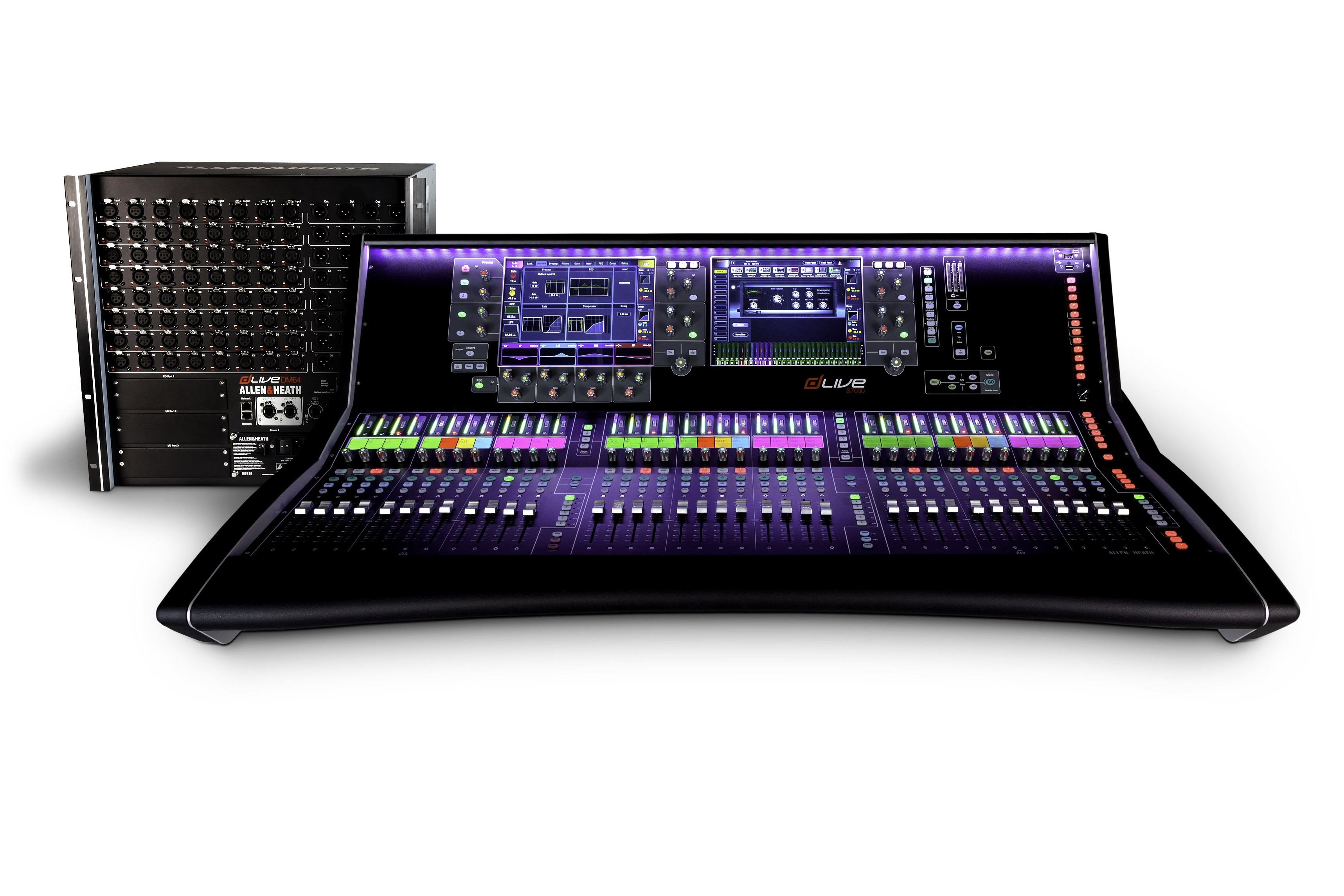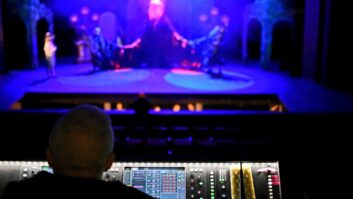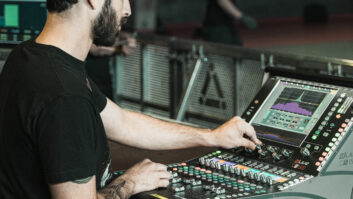
Allen & Heath has launched dLive, a next-generation digital mixing system geared to applications from installation in prestigious live venues to rigorous touring and festivals. dLive features ‘ultra-flexible’ architecture; a powerful FPGA processing core; a comprehensive array of expansion, control and networking options; plus the intuitive Harmony user interface with gesture control.
dLive has a distributed system design with separate MixRack and Surface. The dLive processing brain is housed in the MixRack, available in three sizes – the DM32, DM48 and DM64 – and there are three accompanying control surfaces. All MixRacks and Surfaces are mix-and-match compatible, with common configuration, set-up and show files. The MixRacks also contain the same processing engine, pioneered by the Allen & Heath R&D team using next generation FPGA technology.
The 96k/96-bit XCVI Core provides capacity for 128 inputs with full processing and 16 dedicated stereo FX returns, offering 160 inputs to mix, plus a fully configurable 64 mix bus architecture, with full processing on all 64 mix channels. dLive incorporates the DEEP processing portfolio of embedded plugins, including Graphic EQs, Compressors, Multiband Compressors and Dynamic EQs, alongside its 16 slot FX racks, featuring Allen & Heath’s range of FX emulations.
Watch the dLive video here:
“Focusing on feedback from our customer base and key engineers, we have developed a new Allen & Heath technology base for live mixing. The XCVI Core is designed from the ground up to execute our DEEP Processing algorithms from within the FPGA channel processor core. This unique architecture allows users to select various embedded processing models on every input and mix channel on the fly, without burning valuable FX slots or adding latency,” said Allen & Heath’s R&D director Dr Rob Clark.
Remote IO expansion is provided at both the MixRack and Surface through dual-redundant cat5 DX ports. This enables connection of up to three modular DX32 expansion units. Further inter-system and network connectivity is available through five resident 128 channel I/O ports for a range of audio networking cards, including Dante, Waves SG, ACE, and MADI, with a fibre optic option also under development.
The dLive Surfaces come in a choice of three sizes – the S3000, S5000 and S7000. (Pictured is the dLive S7000 Control Surface with DM64 MixRack.) The Surface layout is fully customisable, every input or mix can be assigned to any bank and layer, named and colour coded, and the engineer has 26 assignable SoftKeys at their disposal. Key to the Surface design is the new Harmony UI which integrates screen and wrap-around controls with a single or twin 12” capacitive touchscreen, gesture control, configurable widget areas for Scenes, meters and FX. There is also advanced illumination control for optimal visibility in daylight or low light conditions, including backlit keys, RGB coloured encoders, and an integrated LED light strip.
Alternative mixing control is provided via MixPad and OneMix apps, Editor on/offline software, TCP/IP control for third party integration, and network-enabled IP fader and rotary remote controllers.
Finally, dLive has a new pro touring grade chassis, optimised for weight and rigidity. All units have dual power supply slots for redundancy, with PSUs hot swappable between Surfaces, MixRacks and Expanders. Dual redundancy is also built into every audio connection throughout the system.
“It really is the ultimate mixing system, with all the processing tools and power that the most demanding engineers would expect, and the flexibility and networkability to cater for any application. This is coupled with an extremely intuitive user interface and what we believe is the fastest workflow in the industry,” said Nicola Beretta, senior product manager. “dLive is equally at home in fixed installations, such as a HOW or theatre, as it is at festivals and out touring.”
Prices range from $22,500 for a small dLive venue solution to approximately $35,000 for a large touring system.







